The Pyrenees
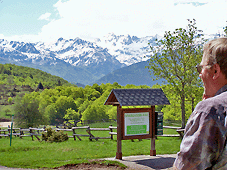 The mountain chain which stretches out from sea to sea and which forms the natural border between France and Spain, was created between 380 and 280 million years ago. Spain was pushed against France with such might, that the mountains came into existence and in the course of time the Pyrenees were shaped and formed by erosion, until they became what we see today.
The mountain chain which stretches out from sea to sea and which forms the natural border between France and Spain, was created between 380 and 280 million years ago. Spain was pushed against France with such might, that the mountains came into existence and in the course of time the Pyrenees were shaped and formed by erosion, until they became what we see today. 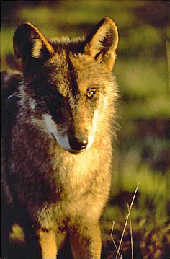 In prehistoric times, when great floods covered many parts of Europe, the mountainous areas such as the Montagne Noire, the Massif Central and the Pyrenees were islands where life continued. Especially in these regions prehistoric man lived, of whom the oldest remains in Europe (450.000 years old) were found in the caves near Tautavel. The Cro-Magnon, a descendant from the South African San people, who replaced the cavemen of Europe about 30.000 years ago, also lived in the Pyrenean mountains as a shepherd. By 6000 B.C., their herds had become so huge that the landscape of the lower Pyrenees had changed completely by overgrazing. Keeping sheep and goats was the main means of survival in the mountains and valleys of the Pyrenees.
In prehistoric times, when great floods covered many parts of Europe, the mountainous areas such as the Montagne Noire, the Massif Central and the Pyrenees were islands where life continued. Especially in these regions prehistoric man lived, of whom the oldest remains in Europe (450.000 years old) were found in the caves near Tautavel. The Cro-Magnon, a descendant from the South African San people, who replaced the cavemen of Europe about 30.000 years ago, also lived in the Pyrenean mountains as a shepherd. By 6000 B.C., their herds had become so huge that the landscape of the lower Pyrenees had changed completely by overgrazing. Keeping sheep and goats was the main means of survival in the mountains and valleys of the Pyrenees. 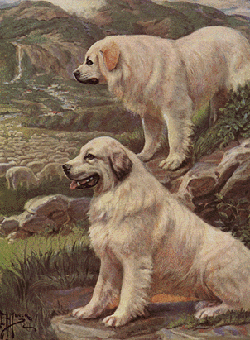 Archaeological finds prove that from the early days of the shepherd existence in Neolithic times, man was helped by a dog. The dogs protected the herds against attacks from bears and wolves and helped the shepherd to round up the animals when moving from one place to another. This dog is called the Pyr Shep.
Archaeological finds prove that from the early days of the shepherd existence in Neolithic times, man was helped by a dog. The dogs protected the herds against attacks from bears and wolves and helped the shepherd to round up the animals when moving from one place to another. This dog is called the Pyr Shep.Even today it is a beloved dog and it still assists the modern day shepherds during their lonely Summers up in the mountains.
The shepherds in the Pyrenees have a unique way of communicating with one another. It reminds me of the original inhabitants of the Canary Islands and some Native Americans. They communicate by a language of whistles...
The Pyrenees are partly protected as a wildlife area. In 1967, the Pyrénées National Park was founded. About 50.000 hectares of Haute-Pyrénées and Pyrénées-Atlantiques contain beautiful natural areas such as Midi d'Ossau, Balaitous, Vignemale, Néouvielle Peaks, Gavarnie and Troumousse Cirques (above 3000 meters). Here we find the high mountain waterfalls, forests and lakes. The rivers Gaves, Adours and Nestes have their source here.
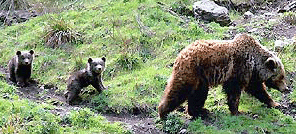 There is a difference in land-scape between the French Pyre-nees and the Spa-nish Pyrenees. The French Pyre-nees are very steep. The moun-tains are cut through by valleys, which from time forgotten have functioned as trade routes. The most famous of them all is the Pas de la Casa, an ancient trade route on which still many people travel to and fro Andorra, the small mountain state between France and Spain. The Pyrenees have also produced kings. Charles V, Louis XIV, the present royal family of Spain and Sweden and the maharajas of Bopal all have Pyrenean ancestors.
There is a difference in land-scape between the French Pyre-nees and the Spa-nish Pyrenees. The French Pyre-nees are very steep. The moun-tains are cut through by valleys, which from time forgotten have functioned as trade routes. The most famous of them all is the Pas de la Casa, an ancient trade route on which still many people travel to and fro Andorra, the small mountain state between France and Spain. The Pyrenees have also produced kings. Charles V, Louis XIV, the present royal family of Spain and Sweden and the maharajas of Bopal all have Pyrenean ancestors. The mountain region is also the habitat of a unique fauna. Several brown bears and wolves live in the mountains and also a herd of 2500 wild goats roam the national park. It is also the realm of the big birds like the eagles and Pyrenean vultures. Because of the differences in height and the different temperatures in the mountains, there is a very divers flora such as rhododendrons, daffodils, blue irises, edelweiss, 'ramondias' and many other beautiful wild flowers.
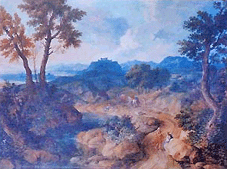 The Pyrenean region is known for its tales and legends. According to one of these legends, the mountains were named after Pyrene, the daughter of the king of Cerdagne. She was so beautiful, that even Hercules, before he would start the last of his 10 works, couldn't help but court the lady. She fell in love with him and decided to follow him after he had left. Unfortunately, the girl was attacked and devoured by wild animals. When Hercules heard of her death, he visited her grave (the cave of lombrives) and was so devastated, that he put over her grave so many stones, that the Pyrenees were formed. Of course also witches and gnomes play parts in the tales of the mountain people. There are many feasts and processions among which the Feast of the Bear and the Feast of St. Firmin. One would fight a battle between Good and Evil. A modern proof of valued tradition.
The Pyrenean region is known for its tales and legends. According to one of these legends, the mountains were named after Pyrene, the daughter of the king of Cerdagne. She was so beautiful, that even Hercules, before he would start the last of his 10 works, couldn't help but court the lady. She fell in love with him and decided to follow him after he had left. Unfortunately, the girl was attacked and devoured by wild animals. When Hercules heard of her death, he visited her grave (the cave of lombrives) and was so devastated, that he put over her grave so many stones, that the Pyrenees were formed. Of course also witches and gnomes play parts in the tales of the mountain people. There are many feasts and processions among which the Feast of the Bear and the Feast of St. Firmin. One would fight a battle between Good and Evil. A modern proof of valued tradition.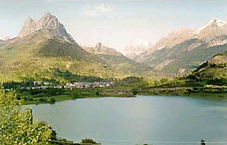 Andorra
AndorraThe tiny mountain state of Andorra lies between France and Spain and is only 464 km² small. Many people visit Andorra because of the tax free shopping, but one often doesn't realise that there is only so much you are allowed to take home. The Customs usually patrol at l'Hospitalet, not the border, and when you are caught with too many cigarettes or alcoholic beverages in the back of your car, you will not only lose your newly bought goodies, but you will also be fined quite heavily. So make sure you keep to your maximum.
Also, many people drive all the way to Andorra la Vella, the capital, for their shopping, but often find out that there is no parking space left. It is so crowded and apart from many other countries, the shops are all closed here on Tuesday and between 12.00 and 15.00 hours all other days. When there is a feast, they all close without warning. If you decide to go to Andorra for the shopping, then go to Pas de la Casa, which is more convenient and pleasant.
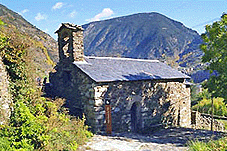 When you come to Andorra for the country and its sights, then perhaps you will enjoy a visit to Les Escaldes near Andorra la Vella, an ancient spa town where two rivers meet. Or visit Encamp, which lies on a height of 1266 meters, from which a cable lift will take you to 1622 meters to a mountain lake, the Lac d'Engolasters. The views are magnificent. Encamp also has the highest belltower in Andorra. There is also a car museum with old cars from 1898 to 1950.
When you come to Andorra for the country and its sights, then perhaps you will enjoy a visit to Les Escaldes near Andorra la Vella, an ancient spa town where two rivers meet. Or visit Encamp, which lies on a height of 1266 meters, from which a cable lift will take you to 1622 meters to a mountain lake, the Lac d'Engolasters. The views are magnificent. Encamp also has the highest belltower in Andorra. There is also a car museum with old cars from 1898 to 1950. On the other side of Encamp lies Les Bons, with its beautiful Santa Roma church.
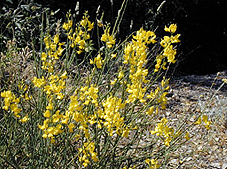 But you do not have to go to Andorra to enjoy the Pyrenees. The trip to Ax-les-Thermes from Quillan is already worth exploring. You will cross the Ariège and the Cathar village Montaillou, famous thanks to the impressive book by Emmanuel le Roy Ladurie. Sniff in the mountain air from the Col de Chioula.
But you do not have to go to Andorra to enjoy the Pyrenees. The trip to Ax-les-Thermes from Quillan is already worth exploring. You will cross the Ariège and the Cathar village Montaillou, famous thanks to the impressive book by Emmanuel le Roy Ladurie. Sniff in the mountain air from the Col de Chioula. 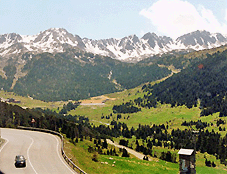 Ax-les-Thermes is a famous spa town where since Celtic and Roman times people came to 'take the waters'. In Wintertime it is a very good ski resort. In Summer you can go on hikes in the beautiful area or just sit on a terrace with a cappucino. There are several souvenir shops and lovely little restaurants.
Ax-les-Thermes is a famous spa town where since Celtic and Roman times people came to 'take the waters'. In Wintertime it is a very good ski resort. In Summer you can go on hikes in the beautiful area or just sit on a terrace with a cappucino. There are several souvenir shops and lovely little restaurants. And when there is a market, do try some goat cheese, it's the best I've ever tasted!